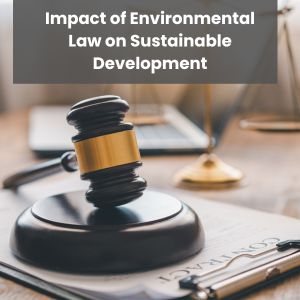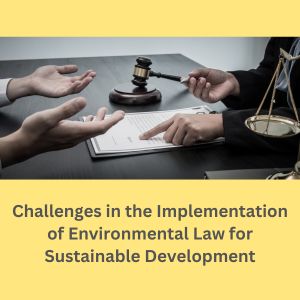Announcement
We are excited to announce the Indus Hackathon 2025, an exhilarating one-day event organized by the CSE Department of Indus University....Read more We are excited to announce the Indus Hackathon 2025, an exhilarating one-day event organized by the CSE Department of Indus University.
26th ISTE Faculty Annual State Convention will be held at Indus University on April 27, 2023....Read more 26th ISTE Faculty Annual State Convention will be held at Indus University on April 27, 2023.
26th ISTE GUJARAT STATE ANNUAL FACULTY CONVENTION & CONFERENCE ON APRIL 27,2023. MORE DETAILS WILL BE SHARED SOON....Read more 26th ISTE GUJARAT STATE ANNUAL FACULTY CONVENTION & CONFERENCE ON APRIL 27,2023. MORE DETAILS WILL BE SHARED SOON.
We are excited to announce the Indus Hackathon 2025, an exhilarating one-day event organized by the CSE Department of Indus University....Read more We are excited to announce the Indus Hackathon 2025, an exhilarating one-day event organized by the CSE Department of Indus University.
26th ISTE Faculty Annual State Convention will be held at Indus University on April 27, 2023....Read more 26th ISTE Faculty Annual State Convention will be held at Indus University on April 27, 2023.
26th ISTE GUJARAT STATE ANNUAL FACULTY CONVENTION & CONFERENCE ON APRIL 27,2023. MORE DETAILS WILL BE SHARED SOON....Read more 26th ISTE GUJARAT STATE ANNUAL FACULTY CONVENTION & CONFERENCE ON APRIL 27,2023. MORE DETAILS WILL BE SHARED SOON.

A profession in architecture can be immensely fulfilling despite these difficulties. Architects have the chance to design stunning and valuable areas that enhance people's lives and have a long-lasting influence on the built environment. Law Students can excel in this fascinating and dynamic industry with commitment and hard effort.
Environmental legislation is passed to control human actions that can harm the environment. These regulations are intended to encourage sustainable behaviour and guarantee that resources are utilised in a way that won't jeopardise future generations' ability to meet their requirements. There are numerous ways to view how environmental law affects sustainable development:
Safeguarding natural resources:- Environmental laws have been passed to protect natural resources such as air, water, and land. These laws protect these resources from contamination and excessive exploitation. Environmental regulations promote sustainable behaviours that guarantee future generations will have access to natural resources by conserving them.

Encouraging sustainable practices:- Environmental regulations encourage using renewable resources, reducing waste, and promoting energy efficiency. These actions all work to further sustainable practices. Due to their ability to lessen the negative effects of human activity on the environment, these practices are crucial for sustainable development.
Environmental deterioration prevention:- Environmental laws aim to stop environmental deterioration by controlling actions that can harm the environment. These regulations ensure that human activity doesn't endanger the environment or impair the capacity of future generations to meet their requirements.
Promoting innovation:- Environmental regulations promote the development of new, ecologically friendly technology and practice, encouraging innovation. These advancements can promote long-term development and reduce the adverse effects of human activity on the environment
In general, environmental law is vital for advancing sustainable development. Environmental laws ensure that resources are used in a way that won't jeopardise future generations' ability to fulfil their requirements by controlling human actions that can negatively influence the environment.
If you want to pursue a law course in India and search for the best law institute, you can go to Indus Law Institute.

There are several obstacles to implementing environmental law for sustainable development, some of which include the following:
Lack of political commitment and will:- Politicians and decision-makers may lack the motivation to uphold environmental regulations. They might put economic growth ahead of environmental preservation, resulting in lax enforcement and non-compliance.
A lack of resources:- Both financial and human resources are needed to implement environmental legislation. Nevertheless, governments might not have enough funding to adequately administer and enforce environmental legislation. As a result, there may be insufficient enforcement attempts and low compliance levels.
Inadequate institutional structures:- Weak institutional frameworks, such as insufficient legislative and regulatory frameworks, a lack of cooperation between government agencies, and weak enforcement mechanisms, can impair the effectiveness of environmental law.
Limited public knowledge and participation:- The general public needs to be better aware of environmental issues. Their limited involvement in decision-making processes can make it more difficult to put environmental legislation into practice.
Environmental hazards that cross borders frequently make it difficult to police and comply with regulations. For instance, pollution from one country may impact another country's environment, necessitating cross-border cooperation and coordination to remedy the problem.
Environmental concerns are frequently complex and dynamic, necessitating an all-encompassing and interdisciplinary strategy to handle them properly. To address new environmental concerns, it may be difficult for the legal and regulatory structures to keep up with the changes.
Embezzlement and immoral behaviour: - Corruption and unethical behaviour can reduce the effectiveness of environmental law, particularly in underdeveloped nations where corruption is commonplace. Weak enforcement, non-compliance, and environmental degradation are all potential outcomes.
A thorough and well-rounded approach is required to solve these problems, which calls for strengthening institutional structures, increasing public awareness and participation, building capacity, and promoting good governance and transparency. Governments, civil society organisations, business communities, and the general public must work together to overcome these challenges and successfully implement environmental legislation.
Case studies in law are common and span a wide range of topics, including criminal law, contract law, tort law, environmental law, and constitutional law. Here are a few well-known legal case study examples:

This case is noted by the statute governing reproductive rights. A Texas law prohibiting abortions other than those necessary to save the mother's life was challenged. The Supreme Court invalidated the law because it interfered with a woman's right to privacy, which includes the freedom to make decisions about her body.
These are just a few examples; depending on the field of law that a student is most interested in, many more legal case studies could be useful.
To learn more about the law course in India, you can visit Indus University for the best facility and comprehensive knowledge.